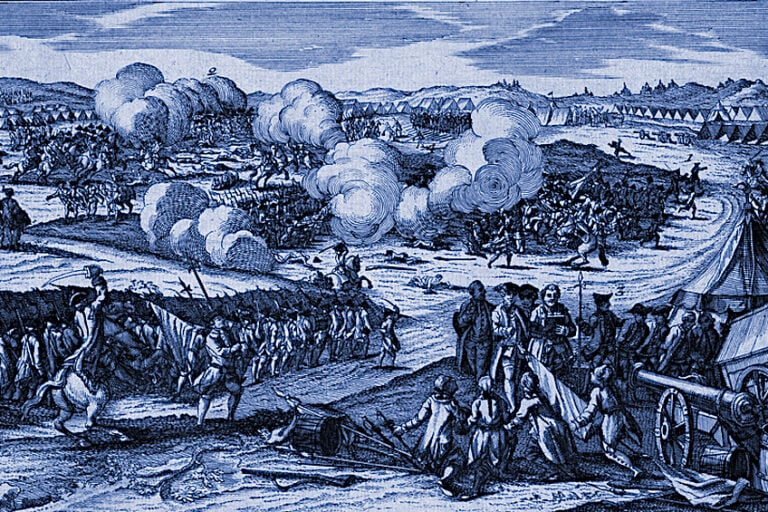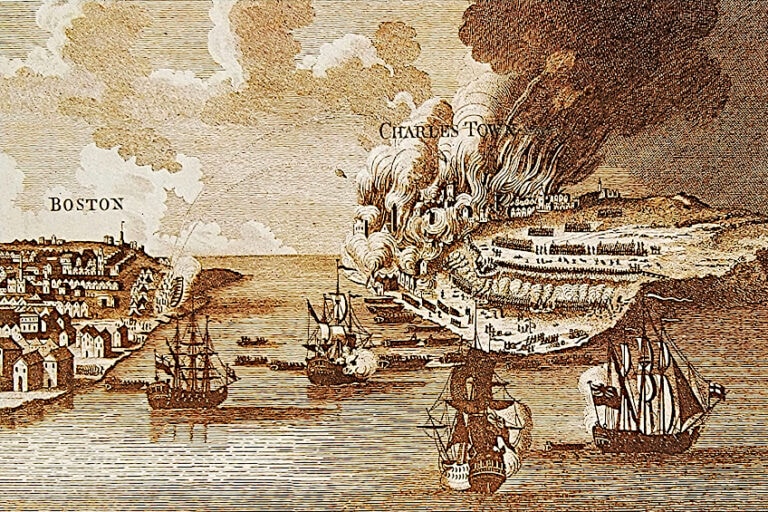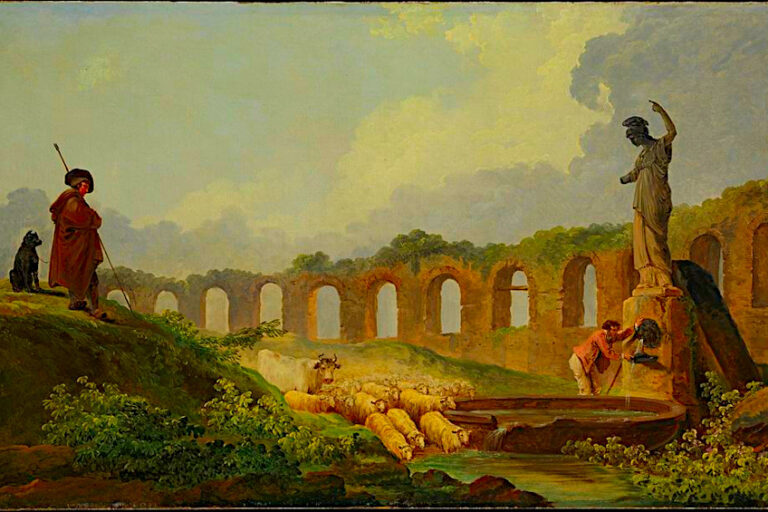Jonestown – Mass Suicide Nov 18, 1978
There are many stories about cults that have convinced people to follow a certain way of life from all over the world. However, virtually none of them are as notorious as the Peoples Temple, or as they’re more colloquially known, the Jonestown cult. What exactly made this cult so intriguing you ask? Well, let’s have a look at what exactly the People’s Temple stood for, who exactly Jim Jones was, and what exactly happened to cause this cult to be seared into the minds and hearts of people all over the world. The following are the events that led up to that which took place on November 18, 1978.
Who Was Jim Jones?
James Jones Warren, or as he has come to be known in later years “Jim Jones” was born on the 13th of May 1931 in Crete Indiana. Jim Jones is said to have been a regular attendee of his local church as a youth. His participation in the church and its community led him to become something of a public figure as he got older, and eventually a community leader and activist of sorts.
After finishing high school, Jones went off to achieve a tertiary education at butler’s university where he reportedly studied a variety of things including psychology, business, military science, English, governmental affairs, sociology, and economics. According to the university transcripts themselves, there are no indications that Jones graduated, despite many sources claiming that he did.
According to both the university of Indiana and Butler’s university, Jones’s education started off promising in his first year with him achieving A’s and B’s with relatively good attendance. As time went on, his grades and attendance took a noticeable dip, and after five years it appears that Jones felt he had learned all he needed to from university, and opted to join his local congregation instead.
In the late 50s and early 60s, Jim Jones started to develop a following and quite a reputation as a charismatic churchman. Jones claimed to have a host of psychic powers that he could use to predict future events and even cure illnesses. What really set Jones apart from the crowd is that he believed in racial integration at a time when discrimination based on race was prevalent in the United States.
Due to his charisma and the fact that he had amassed quite a following while leading the congregation of his local Church, Jim eventually started his own organization called the Wings of Deliverance, which eventually transformed into what is known today as The Peoples Temple, the infamous Jonestown cult.
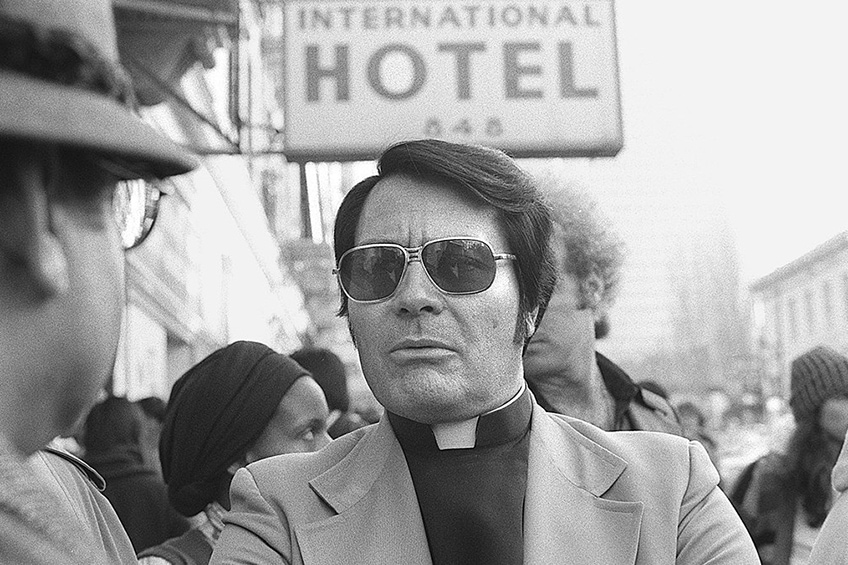 Nancy Wong, CC BY-SA 4.0, via Wikimedia Commons
Nancy Wong, CC BY-SA 4.0, via Wikimedia Commons
Both Jones and the temple were revered in local communities for their activism and acts of charity toward the homeless. The Peoples Temple and by extension Jim Jones were so well-liked that Jones himself headed the Indianapolis Human Rights Commission in the early 1960s where he served as the director until his eventual departure from the state and country later that decade.
What Was the Peoples Temple Cult?
The Wings of Deliverance, and religious organization that Jones had formed after leaving the church he had grown up serving. As time went on and ideologies developed, The Wings of Deliverance would rebrand itself as The Peoples Temple, which coincided with Jones moving the organization to Northern California in 1965.
The Peoples Temple was one of the most diverse religious organizations in the continental united states at the time, which only further solidified the positive view that the community at large had of Jim Jones and The Peoples Temple at large. Initially, the group’s ideology preached aspects of mainstream Christianity, socialism, and racial integration.
While in California, the group actually had multiple locations throughout the state which they used for worship and recruitment. Although their headquarters were located in San Francisco, they often reached out to other regions and attracted followers from all over the country in an effort to bolster their number and expand their sphere of influence.
Despite their best efforts, the total number of people who were active members of The Peoples Temple was nowhere near what Jones and other high-ranking members ever claimed they were. The numbers claimed by Jones and his followers were somewhere around 20,000 active members when in reality the number was closer to 5000.
Many people don’t know that the Peoples Temple was originally called the Peoples Temple Full Gospel Church before it became to be known as The Peoples Temple Disciples of Christ, and then was eventually shortened to simply The Peoples Temple. The name of this group would eventually become the subject of many studies and debates regarding doomsday cults and the power of religious indoctrination.
The Jonestown Massacre (November 18, 1978)
The Jonestown massacre, also known as the Jim Jones massacre, is one of the most famous historical mass murder-suicide events in recent history. The Jonestown event and the days leading up to it sparked an incredible amount of international media attention regarding the nature of these new-age religious groups and the potential threats they posed to young people, not to mention the nation at large.
This being said, let’s have a look at what exactly happened leading up to the Jim Jones massacre, where it happened, what caused the largest mass suicide in recorded history, and what happened in the aftermath of these events. Keep in mind that the majority of these events happened on foreign soil, and at that stage, the US government had little to no control over the events that played out.
Moving to Jonestown
You might be asking yourself why Jim Jones even decided to move his followers out of the country when he had so many locations all over the state of California. Well, the truth is that Jones was eventually forced to move and his followers outside US borders once reporters and news outlets at large began investigating the nature of his organization and how members were treated.
What happened to trigger this sudden interest you ask? Well, rumors began circulating that Jones and his superiors had been treating members of his Temple in a manner that could only be described as less than humane. According to many accounts, Jones was abusive toward his followers in more ways than one.
As, members of the Jones congregation were regularly subjected to physical and psychological torture which could only be described as draconian by members who survived the entire ordeal. There were instances where members were beaten for disobeying orders or not behaving in a manner considered conducive to the cult’s goals.
There are also accounts of members being humiliated both privately and publicly in order to shame them into complying with the organization’s ways. Further accounts detail members being “brainwashed” into forking over their earnings, life savings, and even deeds to their homes and properties at times.
Other instances involved members being blackmailed into complying with the organization’s demands, and in severe instances, members were denied the ability to contact their family members and loved ones. When the media caught wind of all of these accusations, Jones moved several hundred of the members of his organization to a compound he called Jonestown in Guyana South America, which he had been building for around three years.
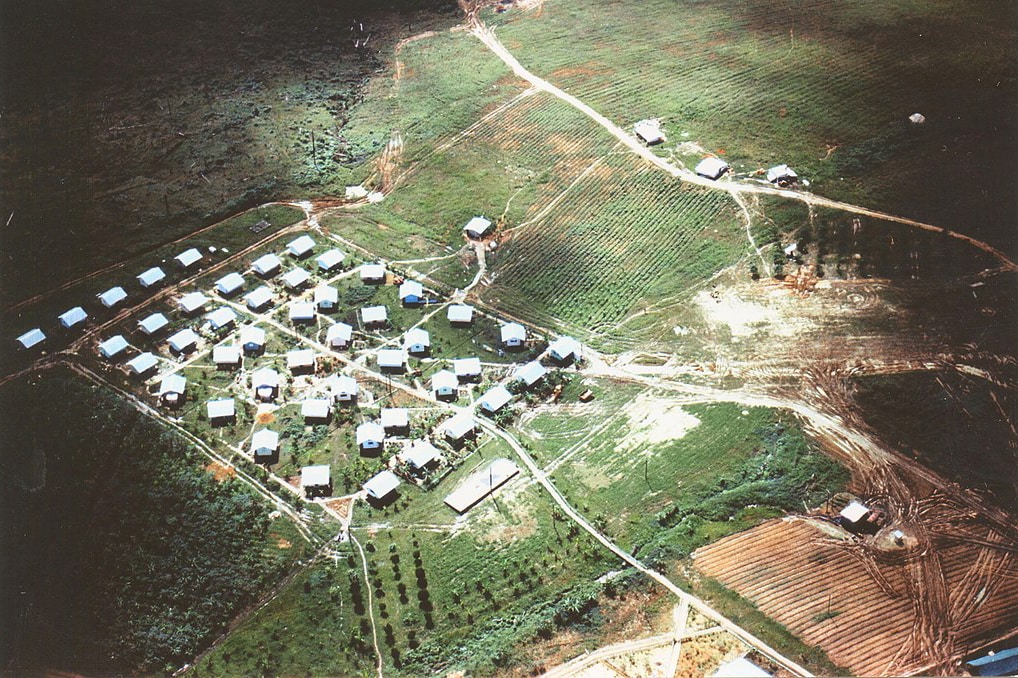
Federal Bureau of Investigation, Public domain, via Wikimedia Commons
Conditions in Jonestown
Upon leaving for the Jonestown compound, Jones had sold the location as a self-sustaining, isolated commune that ran on socialist principles where everyone would be treated equally. In reality, the compound was isolated but conditions there were harsh as the temperatures were capable of reaching up to 86 degrees Fahrenheit (30 degrees Celsius).
The heat wasn’t the only problem though. The jungle in which they found themselves was home to a range of mosquitos, flies, snakes, spiders, and other animals that didn’t appreciate the sudden presence of people in their ecosystem. The members of Jonestown had to fight both the elements and the wildlife every day simply to survive.
Members of the commune would often wake up at the crack of Dawn to work the fields and various other plots in an effort to grow any form of agriculture for subsistence. However, they soon discovered that the jungle soil was far too thin for any of the vegetation they intended to grow to take hold. This led to an imminent food shortage and loss of morale.
In the summer months, temperatures would soar so high that many of the plants that were growing would die out simply due to overexposure. There are reports of water brigades being executed by Jonestown members to ensure that their food sources didn’t die out, which only further decreased morale among Jones’s congregation.
Jones had also ensured that nobody was able to conspire against him by not allowing anyone time to rest or eat. Furthermore, he enforced other rules which prohibited contact with the outside world and forced everyone to remain silent whenever he spoke in person or over the loudspeaker system inside the compound.
The Visit of Congressman Leo Ryan
Things eventually came to an impasse when the US embassy in Guyana sent a cable communication to the US government detailing the goings on in Jonestown. The communication illustrated how Jonestown was essentially a sovereign state of US citizens inside a foreign country, the government of which had little to no control in terms of surveillance and moderation.
For both political and humanitarian reasons, this piqued the interest of the US government, which sent in the then Governor of California Leo Ryan along with a press team and family members of Jonestown members to investigate the community. This investigation was further fueled by accusations that people had been held in Jonestown against their will.
According to reports by both survivors and escapees, Jones had been having his lieutenants rehearse appropriate responses with members of the commune, including who could and could not speak directly to him. When interviewers asked what the members ate, they were reported saying chicken, steak, and lamb, and even though one could clearly see they were starving Ryan believed them.
This façade continued for a while until one of the community members slipped Ryan a note stating that they needed help. When word reached back to Jones, he was furious, and both the Congressman and reporters were told to leave immediately. The congressman’s party along with 14 defectors boarded a truck and left for an airstrip where they were supposed to be met by two aircraft.
Upon arriving at the airstrip, the aircraft were nowhere to be found. Eventually, both airplanes arrived but as the parties began boarding, a tractor pulling a load bed behind it emerged from the trees. Several men got off the bed brandishing firearms and opened fire on the would-be passengers, killing five people including Congressman Leo Ryan.
The Mass Murder-Suicide of Jonestown Guyana
The men who fired on the defectors and reports returned to Jonestown and immediately told Jones what had happened. His response was swift and decisive, ordering a mass suicide to take place involving everyone in the compound, including his wife, women, children, and guards. This is how events unfolded according to survivors and the “last tape” discovered at the site of the event.
Jones had held “practice runs” for just such an occasion, where he would make parents watch as he fed cyanide to their infants. This was all done at gunpoint to ensure compliance, even when parents protested and screamed as their babies choked while foaming at the mouth, eventually dying agonizing deaths.
The intention behind this was to break the spirits of not only the parents but anyone else who was forced to bear witness to these events. By all accounts, Jones seemed to be obsessed with control over the minds and bodies of his followers, and desired complete compliance with his demands at all times, regardless of the cost.
As he had done in the past, Jones started with infants and children. He would dispense a solution of cyanide, sedatives, and tranquilizers via a syringe into the mouths of crying infants and wait for them to cease moving. Parents were forced to watch while guards stood behind them with crossbows and firearms to ensure that they did not move.
After this, children and teenagers were subjected to a similar cocktail that they were forced to consume. Adults met the same fate or were injected with similar substances against their will. Once the majority of the compound members were dead and Jones had finished recording his tapes, he shot himself in the head. This was the largest mass suicide in recorded history, bar none.
How Many People Died in Jonestown?
One of the most commonly asked questions when discussing Jim Jones is exactly how many people died in Jonestown. Well, Jonestown was by far the largest mass suicide event in recorded history, which led to headlines like “918 people commit suicide” and “mass suicides in Guyana cult” spreading all over South America as well as the United States.
Overall, just under 1,000 people committed forced murder-suicide inside the compound, of which 417 of which were children under the age of 18 and infants alike. As reports trickled in, numbers ranged from 300 to 400, but the true number of deceased individuals was not known until the investigation had been completed later that year.
Jonestown Guyana become the epicenter of many studies and the topic of discussion in households all over the world. This spared a new age of (rightful) paranoia surrounding new religious organizations and their intentions with the youth of the time. After all “918 people commit suicide doesn’t exactly inspire confidence in parents of teenagers.
How Many People Survived Jonestown?
Another question that is often associated with the topic of Jim Jones is exactly how many people survived Jonestown. The answer is that just under 100 people (80 to be exact) survived the murder-suicide event of Jonestown that day in Guyana. However, hundreds of members at numerous other locations back in the United States survived.
Once the survivors were safe, they were treated, interviewed, and reintroduced into society. Many of them were interviewed years later regarding the events that occurred that day and the events leading up to it. They were able to provide valuable insight into the inner workings of the people’s temple and the mind of Jim Jones himself.
As you can see, leaders from all walks of life are capable of starting out as likable and charismatic, but the allure of power and the potential control they wield over people’s lives can quickly and easily corrupt their virtuous ways. Many lessons were learned from the events that occurred in Jonestown Guyana that day, but arguably the most important is that one’s individuality and freedom should never be compromised regardless of how enticing a leader or opportunity may be.
Frequently Asked Questions
Is There Anything Left at Jonestown?
Taking into account where the site of Jonestown was located, it should come as no surprise that the juggles and surrounding vegetation have reclaimed the area. There is virtually nothing left of the site at all these days.
Did Anyone Get Charged for Jonestown?
According to the record of events, nobody has been charged with the deaths of those who were forced to commit suicide in Jonestown Guyana. Most of those involved in the operation either committed suicide or were killed, resulting in nobody being held accountable for what took place.
Where Was Jim Jones Buried?
Even though it seems in bad taste to some, all of the members of Jonestown were buried in a mass grave in Oaklands evergreen cemetery. The leader of the Temple of the people, Jim Jones, is included in the bodies buried at this location.

I am deeply passionate about history and am constantly fascinated by the rich and complex stories of the past. As the editor-in-chief of learning-history.com, I have the opportunity to share this passion with a wide audience through the creation and distribution of engaging and informative content about historical events, persons, and cultures. Whether it’s through writing articles and blog posts or creating videos or podcasts, I strive to bring the past to life in a way that is both accurate and enjoyable. My expertise in history, combined with my strong writing and communication skills, allows me to effectively communicate complex historical concepts and make them accessible and interesting to a wide range of readers. I am truly grateful for the opportunity to share my love of history with others through my work on learning-history.com.

